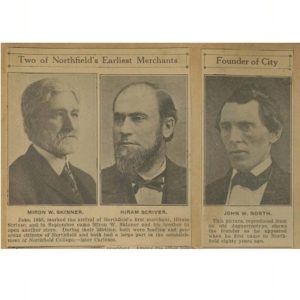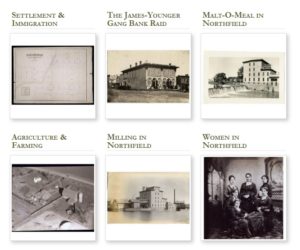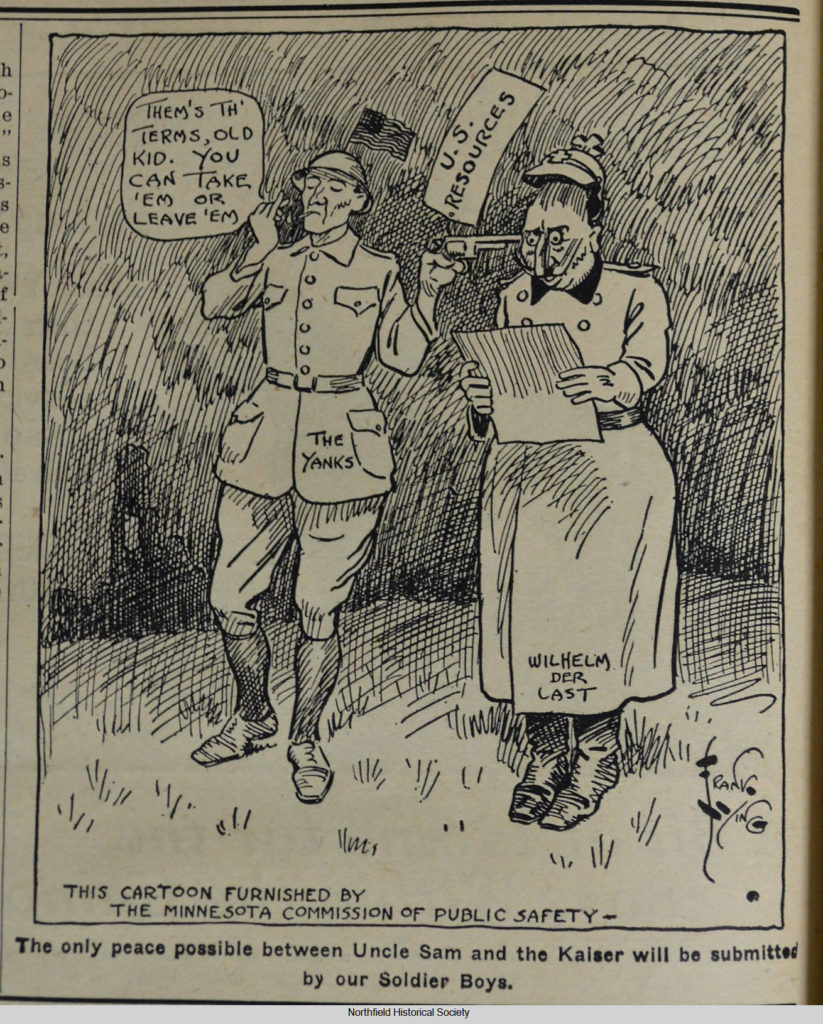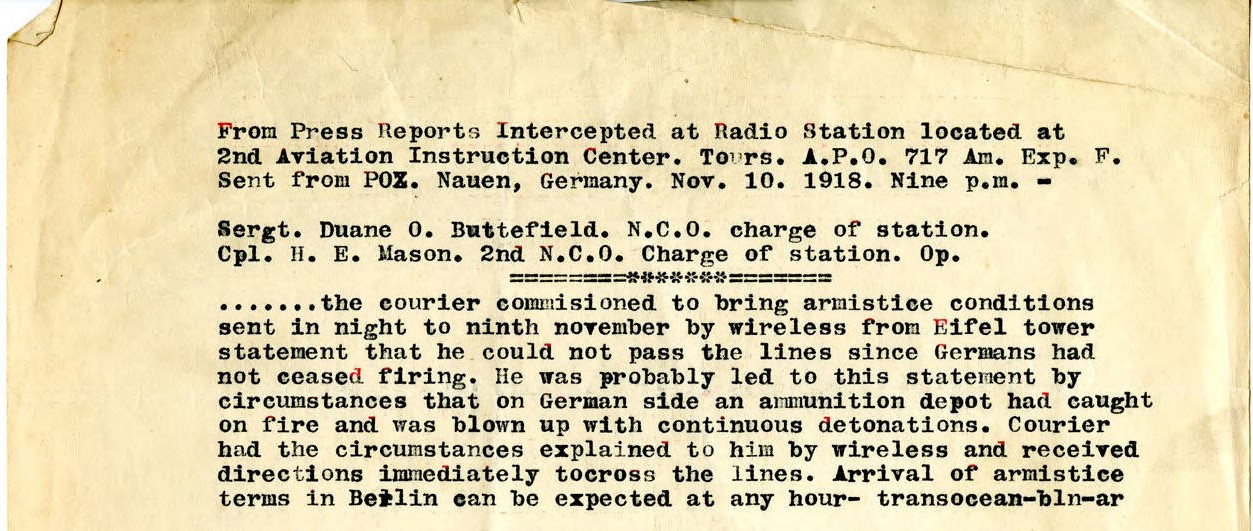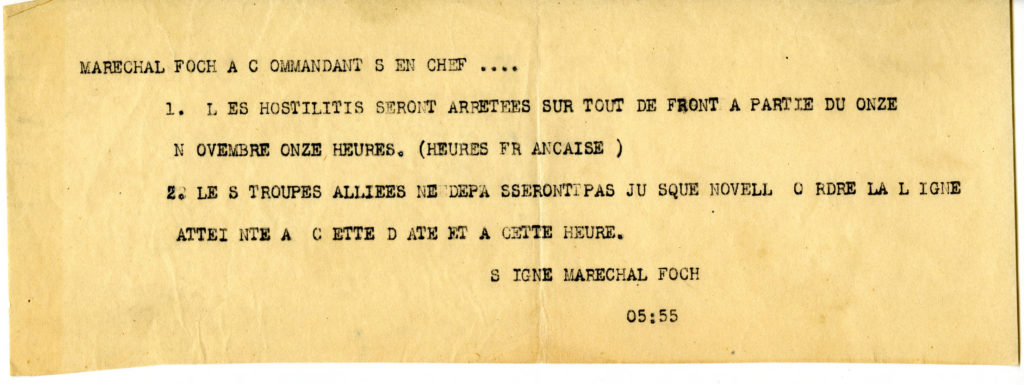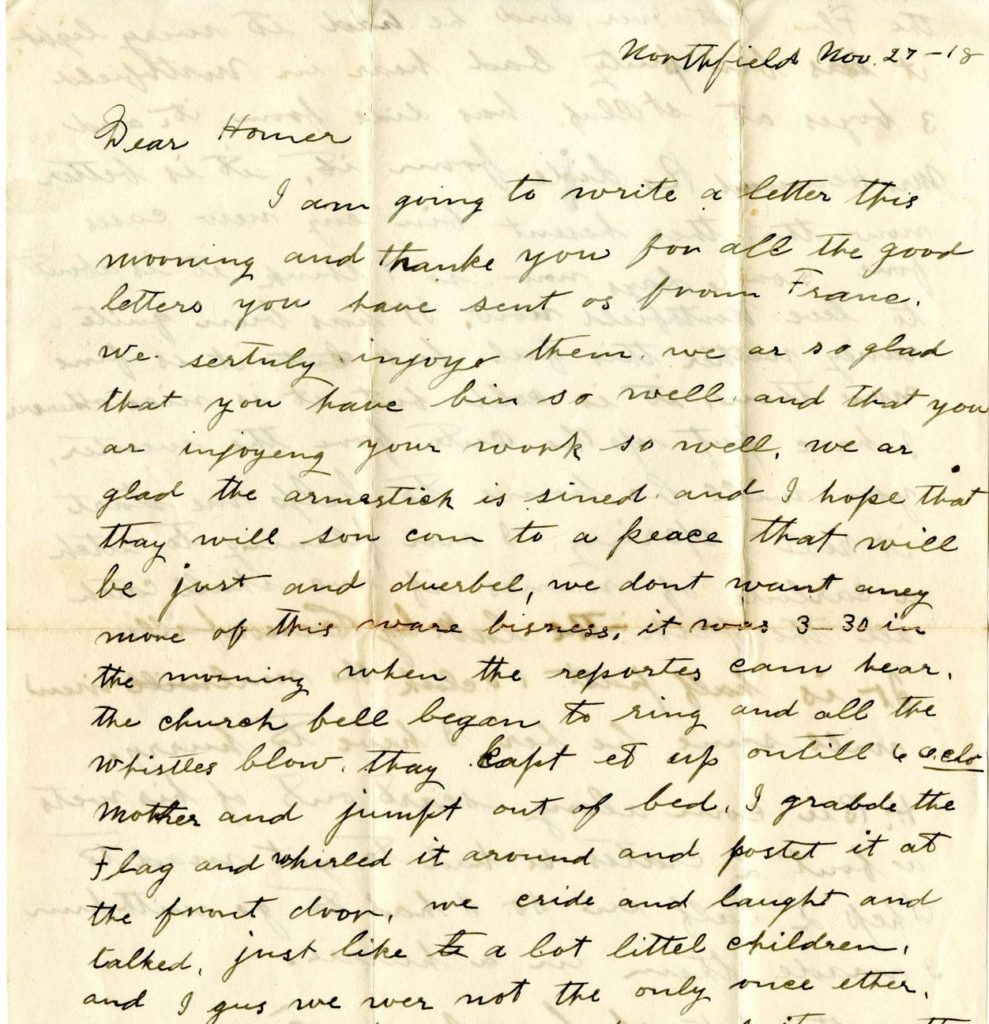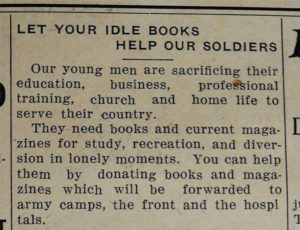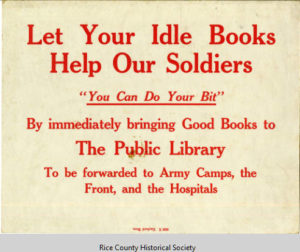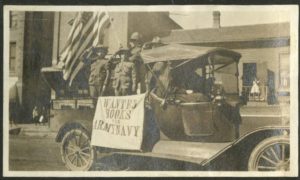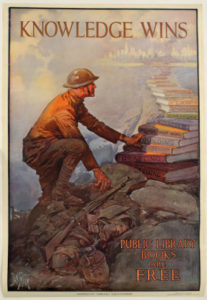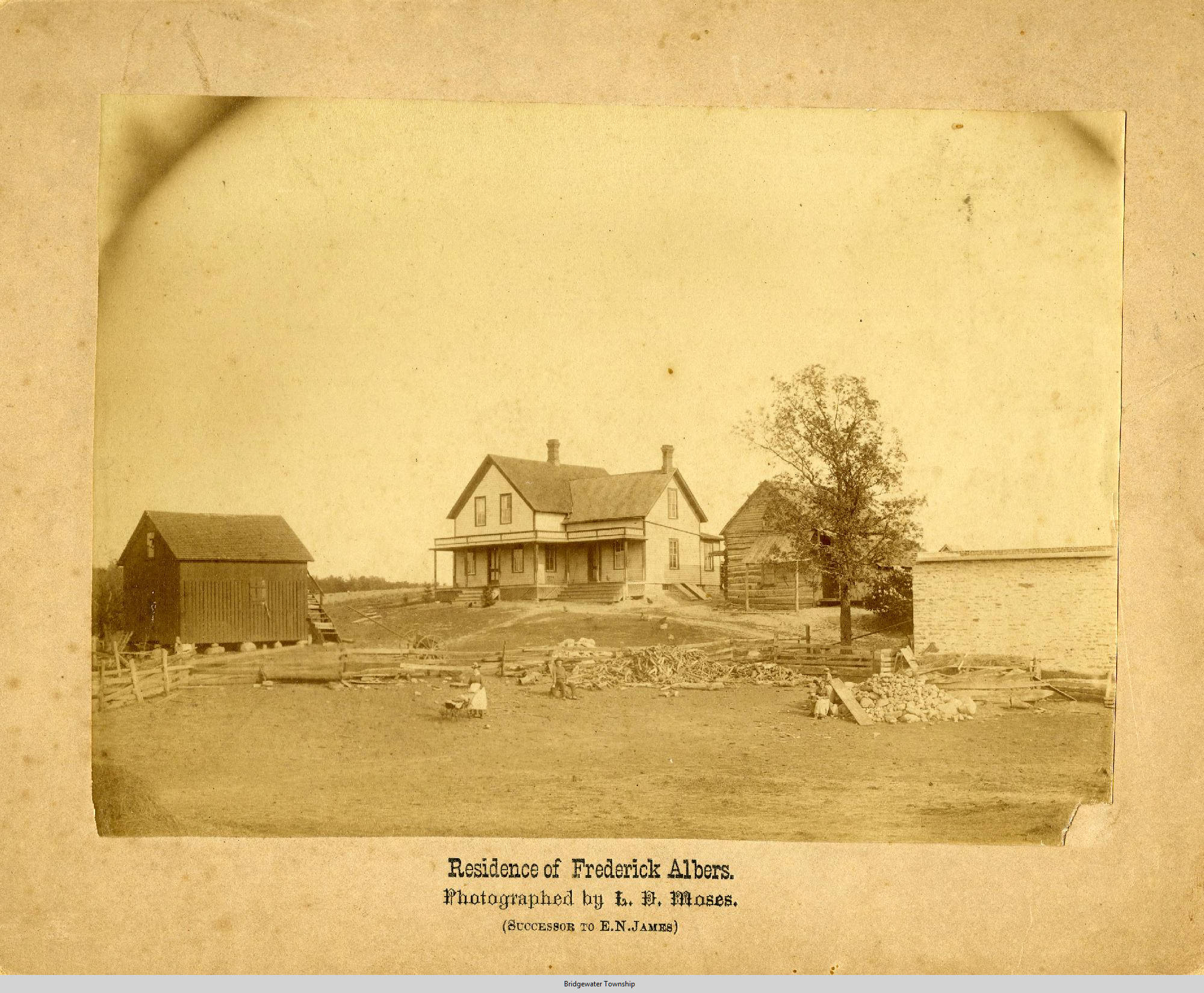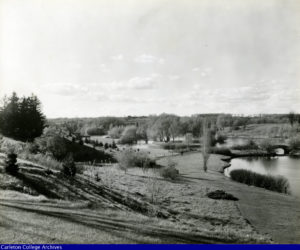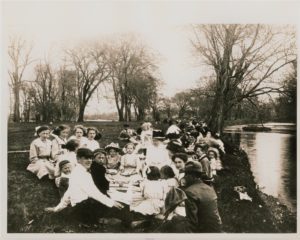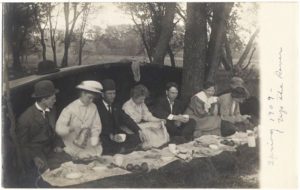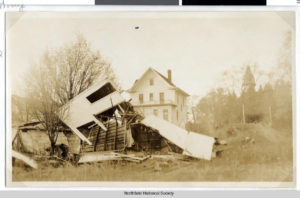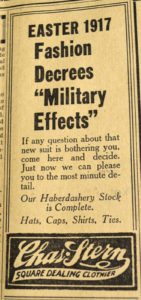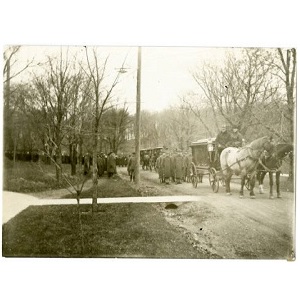by guest columnist Robert Coleman
Spring is finally here! Well, at least according to the calendar. In Minnesota it can sometimes be a little difficult to tell. But before long, song birds will be returning, trees will be budding, and gardens will need tending. This year’s frigid winter will soon be only a distant memory as the last of the remaining snow melts away. Easter approaches, as do commencement celebrations and spring festivals such as May Day. Finally time to escape the homes we have been cooped up in all winter and pull out the barbeque or have a picnic. In my family, spring also means getting out the rain boots and coats so we can do some serious puddle splashing!
In the early years of the twentieth century, citizens of Northfield welcomed the germination of the new year in ways both analogous to and different from today. Perhaps a larger contingent of the population was occupied with planting the season’s crops, and masses of children probably did not descend on the city’s parks to search for candy-filled plastic eggs. Still, many parallels can be drawn, and it is certainly possible to imagine oneself sitting on a blanket having a picnic along the Cannon River on a fine April afternoon, whether in 2018 or in 1918. Exploring the wealth of documents digitized by the Northfield-Rice County Digital History Collection opens a window into these early years. These documents span many aspects of life, from histories of the city’s early schools and churches to letters sent home from sons at war, all giving us opportunities to study these spring days of long ago.
Spring is first and foremost a time of rebirth. It is a time for planting gardens and fields. As leaves return to the trees, so do the song birds that escaped to warmer climates for the winter. An early undated photo from the Carleton College archives shows a spring view of Lyman Lakes that could nearly have been taken today, minus the newer buildings and the highway. The lakes were created and given to the College in 1916-1917 by George and Marietta Lyman in memory of their son George Huntington Lyman.[1] A second photo, from May of 1910, shows a group of children from St. John’s Lutheran Church having a Sunday picnic. The trees overhead show relatively bare branches with few leaves yet still manage to shade this idyllic seen. At least one of the young girls has a hat covered with early spring flowers, which she deftly wears on what appears to be a blustery day.
Of course, for many community members the spring holiday of Easter marks a pivotal rebirth. Apparently, those Carleton students not home for the holiday could look forward to a special morning. According to a 1904 history of the school, “Easter morning, in place of the rising bell, a carol is sung, and singing carols, all descend to breakfast with a butterfly or daffodil awaiting each one.” A story in the Northfield News of April 21, 1906 tells of a particularly packed house at All Saints Episcopal Church for that year’s Easter observances. “The church was crowded to its utmost capacity at each of the services, and all agreed that never before had the parish passed a more pleasant and impressive Easter […] A special train on the Great Western railroad brought about ninety from Faribault and adjacent towns.”[2]
As the snows finally melt away after a lengthy Minnesota winter, people across the years have wanted to get outside and enjoy themselves. The parks have filled with families enjoying the sun and the Cannon River has provided ample opportunity for an afternoon river trip. The 1909 photo above shows a group of St. Olaf students having a picnic next to their canoe. What better way to spend a warm weekend afternoon after a long week of classes?
Nothing epitomized this need to get out in the warming sun and celebrate more than Carleton’s elaborate Mai Fete pageants which were held each May on one of the islands in Lyman Lakes. As the two photos above show, Mai Fete was foremost a springtime dance festival. These extravagant events were produced by students and came to involve a majority of the women on campus. First celebrated in 1918, Mai Fete reached its peak popularity in the 1920s and 1930s, regularly drawing thousands of spectators.[3]
As we all know, spring weather can be fickle and the citizens Northfield had ample opportunity to witness nature’s unpredictability in the early years of the twentieth century. The city has known its fair share of floods along the Cannon River and late season snows, along with the early appearance of summer thunderstorms. A particularly dramatic spring storm occurred on May 3, 1922. The photo above shows some of the damage incurred by the tornado that hit the St. Olaf area that evening. The Northfield News noted that “Northfield had a visit from an early season tornado Wednesday evening that threw a scare into everybody in town, and wrought considerable havoc in the northwest portion of the city […] Those who had the opportunity to view it at close range admit that they are satisfied and have no desire for an introduction to another.”[4] Luckily, while considerable property damage was sustained, there were no injuries, not even among the occupants of a bus that was blown into a ditch along Lincoln Street.
The Northfield-Rice County Digital History Collection has been focused on commemorating the centennial of World War One over the past many months. What must the families at home have thought of a spring planting of the family farm or of attending an Easter service without their loved ones by their side? Capturing the contrast between spring’s joy and the darkness of war, one Carleton member of the student training corps recorded in his diary on March 1918: “Only one class. Ushering in Spring – Playing catch […] Good long sleep […] Drill until 4 P.M. Home at 10:01 – [..] Big day at home. Red Cross Auction. Worked in shop. Dance.” What a week! Went to class, played catch, and practiced for war.
Still, even during a time of war, spring brought with it some light-heartedness and apparently a desire to go out and buy a new suit. Two ads for tailors seem oddly out of place during such difficult times. A Chas Stern Square Dealing Clothier ad from March 1917 notes, “Easter 1917 Fashion Decrees Military Effects.” That certainly could have made for some interesting suits at Easter service. An ad for Olberg’s Tailory the next year, however, departed from military styles: “Don’t think that just because the country is at war you can do without your Easter Suit.” Instead, the country needs prosperity during such times and, after all, “you cannot feel prosperous unless you look prosperous.”
Spring is such a contrasting season, the first colorful songbirds bursting onto an otherwise wintertime scene, or bright warm days leading quickly to dangerous floods when the snows finally melt. Though seemly a disparate group of documents—from an advertisement for military style suits to a photo of a church picnic—all of these sources display this distinct contrast that so defines springtime. The pictures taken of Lyman Lakes or of St. Olaf students on a picnic, could easily have been taken in 2018, though perhaps without such formal attire. A diary entry about students drilling for war at Carleton College, or an ad telling us that it is our patriotic duty to purchase suits in war time, perhaps seem a little more out of place.
As the days lengthen again, let’s reflect on the different meanings of spring, and maybe contemplate what it may have been like to welcome the season here in Northfield a century ago. Most importantly, let’s all go grab our rain boots and splash in a puddle or two. I am sure that Northfield residents, young and old, were doing the same a century ago!
—
Robert Coleman is an independent historian and current stay-at-home dad. His background is in public history with an emphasis on Native American history, the environment and changing understandings of landscapes. He has enjoyed working on transcribing projects for the Northfield-Rice County Digital History Collection over the course of the past year and looks forward to continuing to research and write about the fascinating history of his newly adopted home.
—
Notes:
[1] Ben Weiss, Lyman Lakes, http://northfieldhistorical.org/items/show/67
[2] “Easter Services,” Northfield News, April 25, 1906.
[3] Carleton College Student Activities, “Mai Fete,” https://apps.carleton.edu/campus/campact/programs/maifete/
[4] “Tornado Visits Northfield Early Wednesday Evening,” Northfield News, May 5, 1922.



